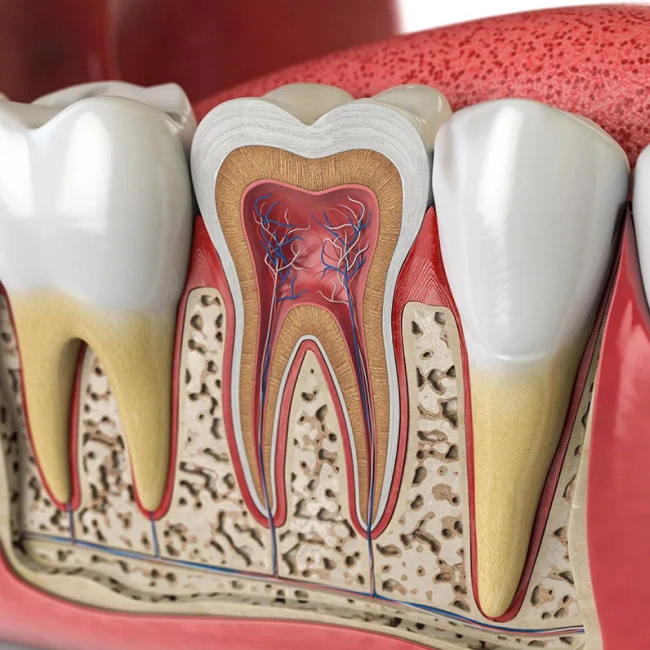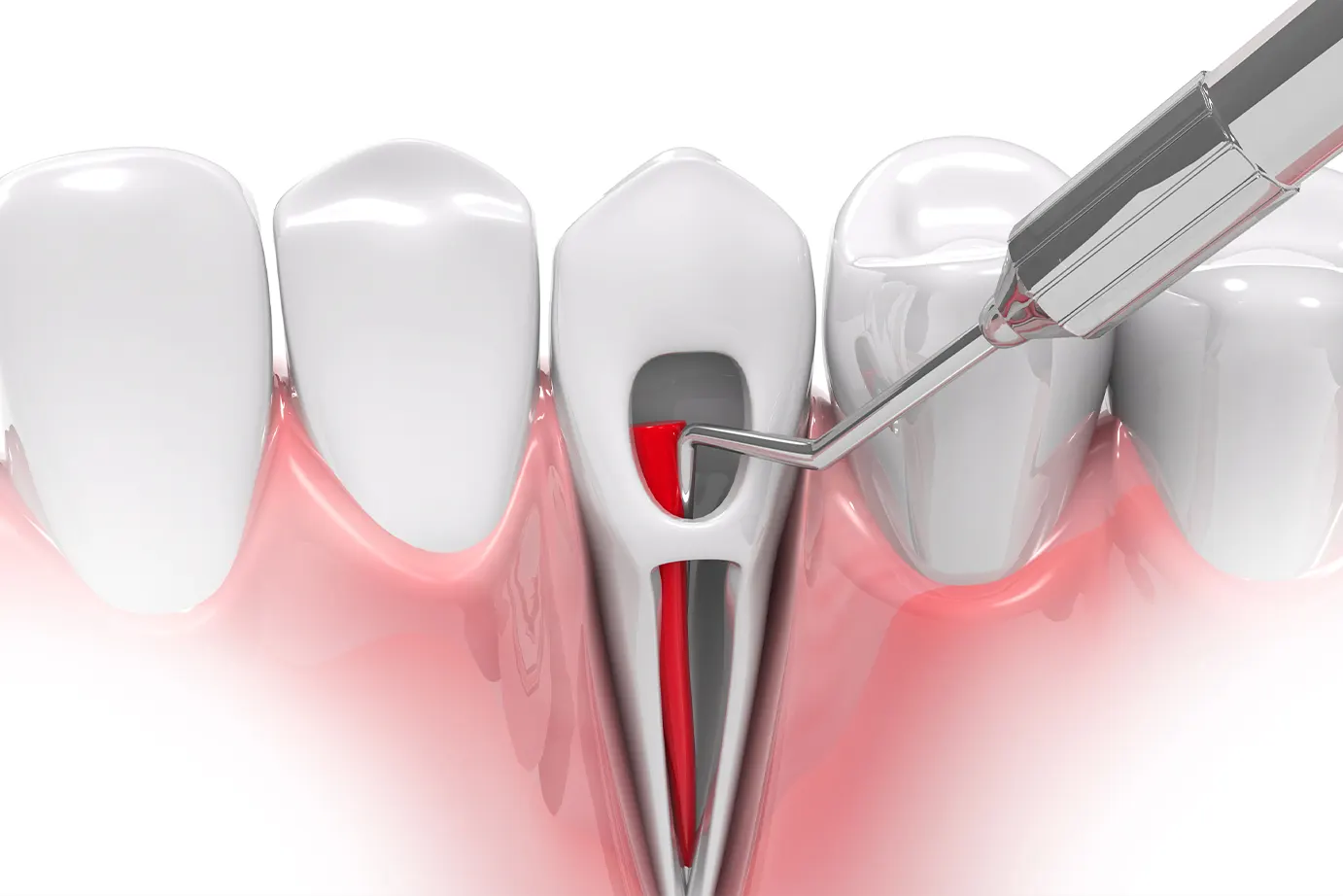
Why Should I Get Root Canal Therapy?
Did you know…
Root canals can be as painless as getting a regular filling.
Ready to
schedule your appointment?
The Benefits Of Root Canal Therapy
Pain Relief
Root canal therapy effectively eliminates the source of infection and inflammation, providing immediate relief from pain and discomfort. This allows you to return to your daily activities without the distraction of tooth pain.
Preservation of Natural Teeth
By undergoing root canal therapy, you save your natural tooth from extraction. This is crucial for maintaining your natural bite and preventing the shifting of surrounding teeth, which can lead to further dental complications.
Prevention of Further Infections
Sealing the tooth after removing the infected pulp prevents bacteria from entering the tooth again. This reduces the risk of future infections and the need for more extensive dental procedures.
The Root Canal Therapy Process
Initial Consultation and Diagnosis
During your initial visit, Dr. Alessandra Coelho will conduct a thorough examination of your affected tooth, often using X-rays to assess the extent of the infection. This step is crucial in determining whether root canal therapy is the right course of action. Dr. Coelho will discuss the procedure with you, addressing any concerns and ensuring you understand the process and expected outcomes.
Cleaning and Shaping the Canal
Once the diagnosis is confirmed, the procedure begins with numbing the area to ensure your comfort. Dr. Coelho will then create a small opening in the tooth to access the infected pulp. Using instruments, she will carefully remove the diseased tissue and clean the canal thoroughly. This step is vital to eliminate bacteria and prevent future infections.
Filling and Sealing the Tooth
After the canal is cleaned and shaped, it is filled with a biocompatible material called gutta-percha. This material seals the canal to prevent bacteria from re-entering. Finally, the opening in the tooth is sealed with a temporary or permanent filling. In some cases, a crown may be placed to provide additional protection and restore the tooth's function and appearance.

